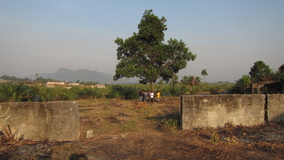
Question:
What do gravel, water, cement, and palm wine all have in common?
Answer:
They were all essential ingredients in the first phase of building the Nimba Center!
What do gravel, water, cement, and palm wine all have in common?
Answer:
They were all essential ingredients in the first phase of building the Nimba Center!
This past fall, Nimba raised over $2,000 from its amazing community of supporters (commence thunderous applause and jubilant cheers) to get down to brass tacks and begin construction at Bentouryah, Youssouf's land and the future home of the Nimba Center. Your donations were both essential and timely as Nimba was threatened with losing our pretty plot of land if we didn't start building right away. Thanks to you, Nimba was able to avoid that heartbreak and, with great excitement and plenty of noisy haggling in Susu and French, broke ground at Bentouryah and started to build.
Our first task was to clear the land with a controlled burn, as is the traditional technique in the area. Never fear, we preserved the pineapple, coconut, and banana plants, but the slow, crackling fires swept the ground of aggressive brushes and stymied the growth of certain palms, which are apparently quite treacherous and like to eat cement walls if left untended.
And the final product of the burn:
Our next task was to arrange for materials. The "Bentouryah Crew," as we came to loosely refer to ourselves, set out from Bagatai with our brickmaker, Amadou, to make our inquiries at Dubreka, a bustling junction town nearby Bentoruyah. We made the typically long and mildly arduous journey of potholes, traffic jams, repetitious car trouble, and the swelter of tropical sun and diesel fumes and eventually arrived at the busy lots and perilous intersections of Dubreka to find our contractors.
After more than a few stops, hasty cell conversations, cold drinks, and gallons of radiator fluid, we finally parked the van near a likely-looking row of dump trucks. Within moments of stepping out from the vehicle, Youssouf had a dozen able businessmen crowded around him, each shouting their estimates and terms for the work, while Annie hastily scribbled each number as best she could in her notebook using her fair-to-middling comprehension of French. After a reasonable amount of deliberations and consultations with Fode, our in-house construction adviser and Youssouf's childhood best friend, the terms were agreed upon. We shook hands with Monsieur Djouma-the-cement-guy, counted out the required amount of Guinea francs from the Nimba purse, and returned to Bentouryah to wait for delivery of the goods.
We decided a pit stop at a favorite palm wine spot was in order, and so we wound our way back on twisty, dusty roads through the bucolic, tree-covered villages tucked in the hills. The palm wine (tungui) from this area is known to be the sweetest and most refreshing around. They tap it directly from the trunk of the palm trees, where the pale, milky ambrosia delicately ferments. In Conakry, the slightly lemony, slightly yeasty delight might be mixed with sugar to sweeten the deal, but up here, it's pure, cool, refreshing, and best when drunk right from the mayonnaise jar (or, in Morla's case, a repurposed Coyah water bottle).
Well, seeing as how the palm wine spot is the perfect place to pass a little time, we'll leave you there for now to enjoy the sunset view of Bentouryah, watch the water from the tidal stream fill up and sparkle through the trees, and enjoy a few swigs as you ease into the weekend. We'll be back next week to share the fruits of our labors in Part 2. In the meantime, keep the work at Bentouryah going by donating today (After you finish your palm wine, of course!)
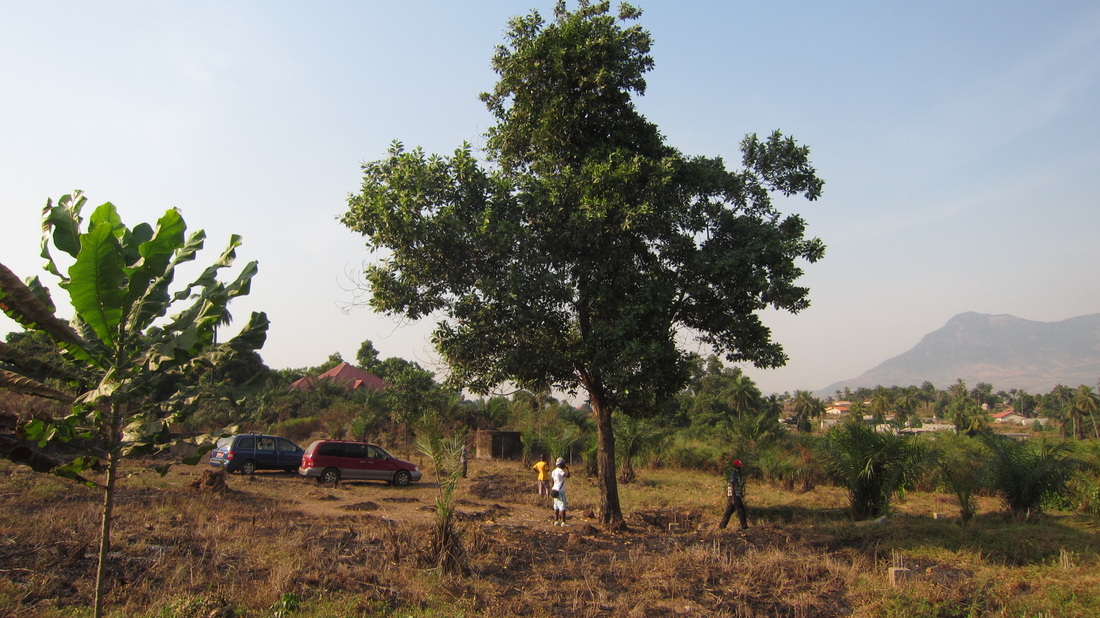
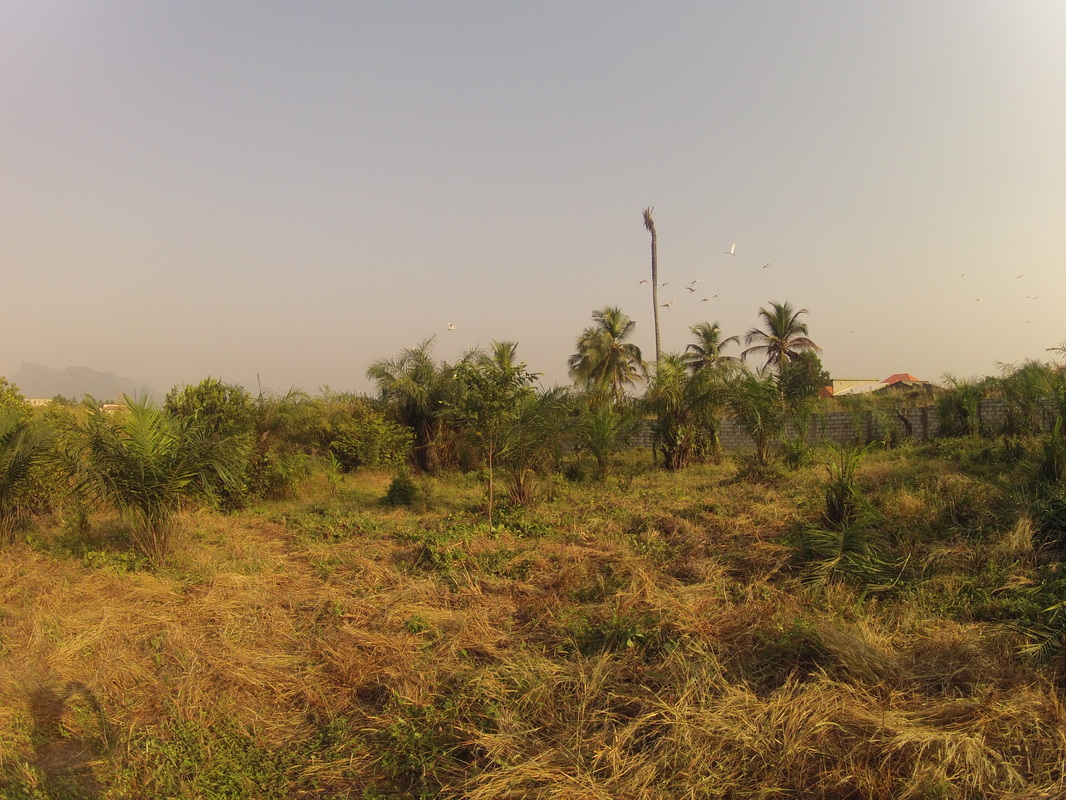
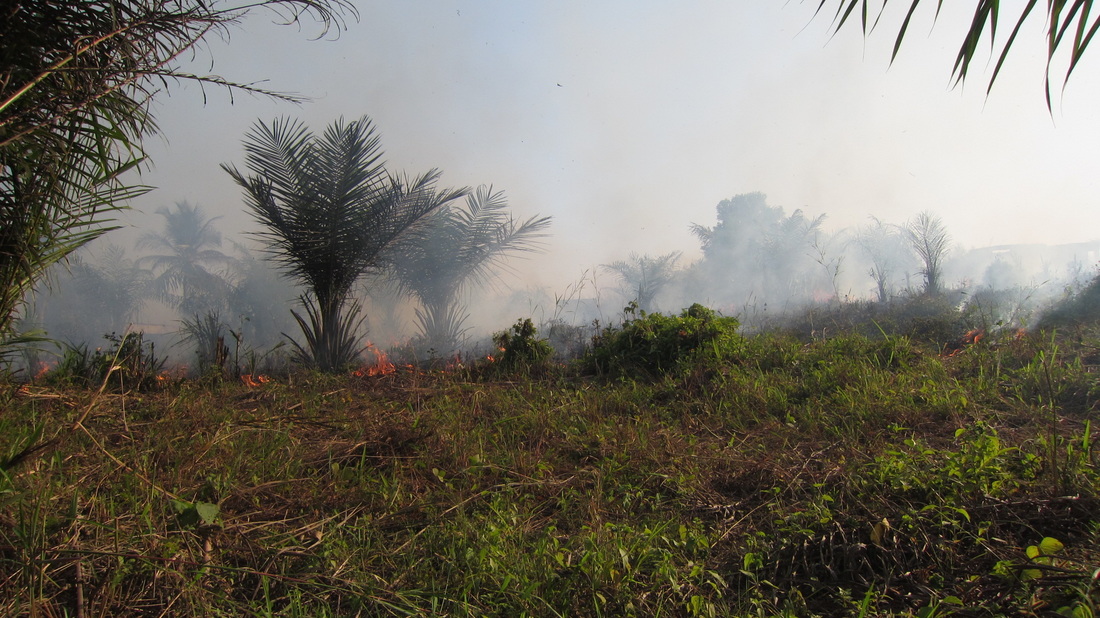
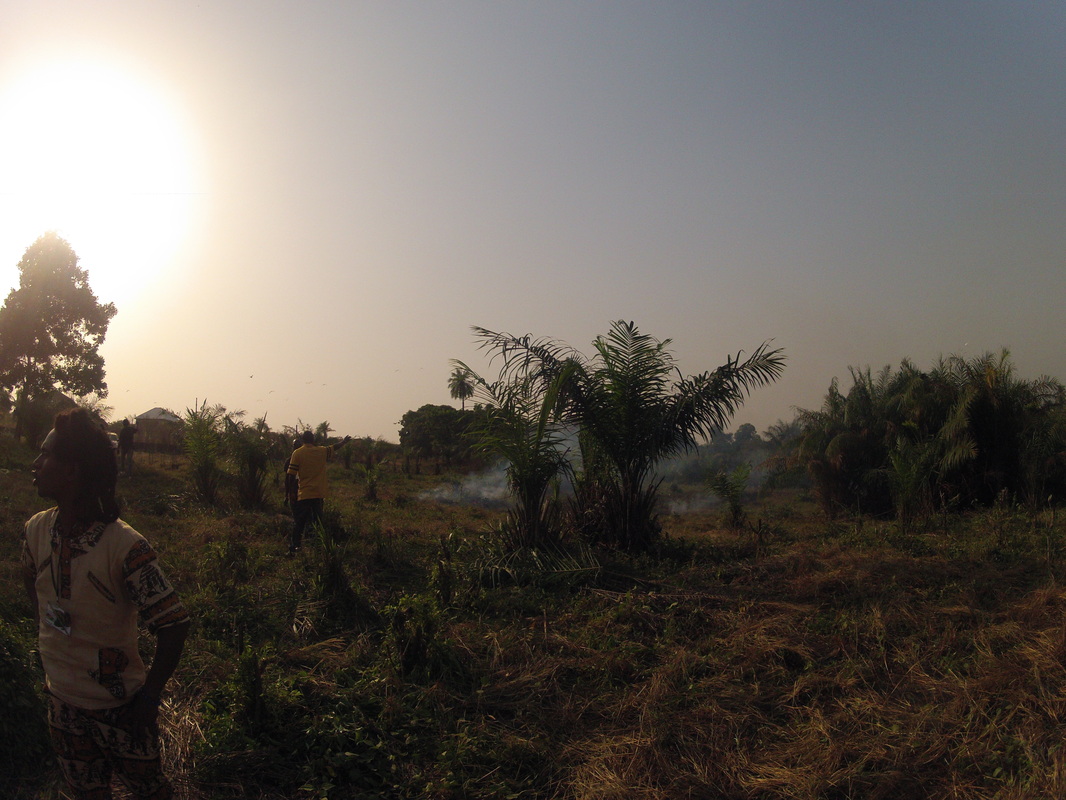
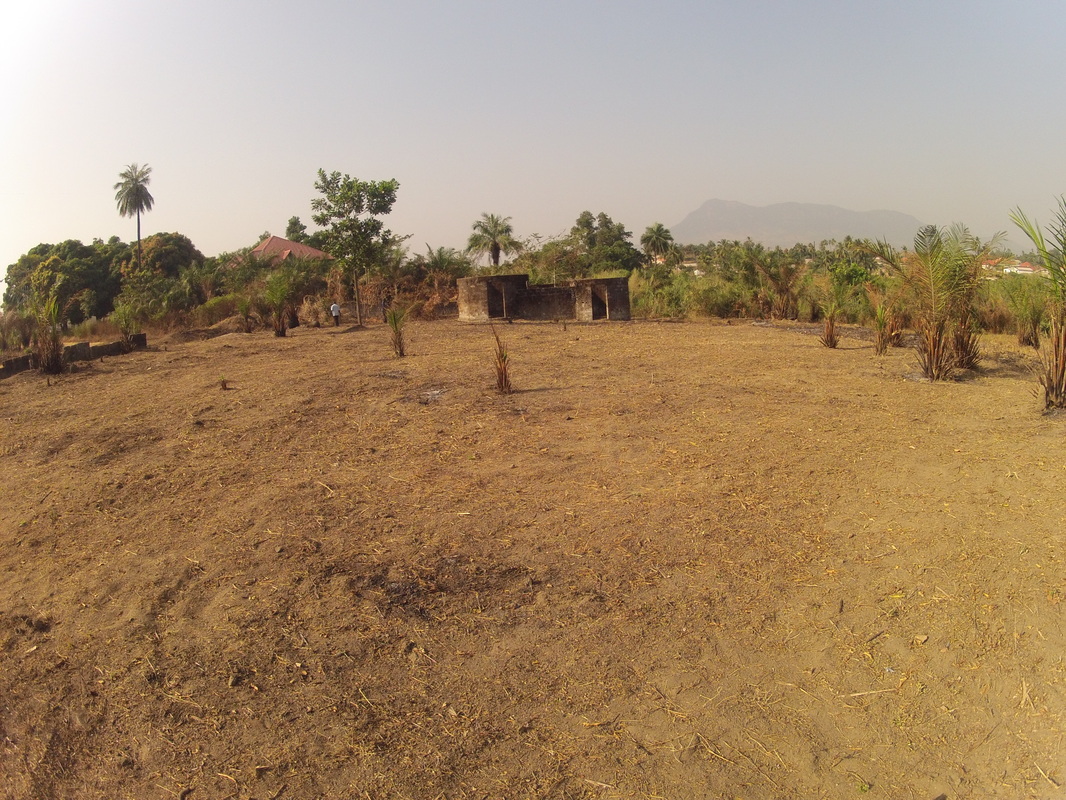

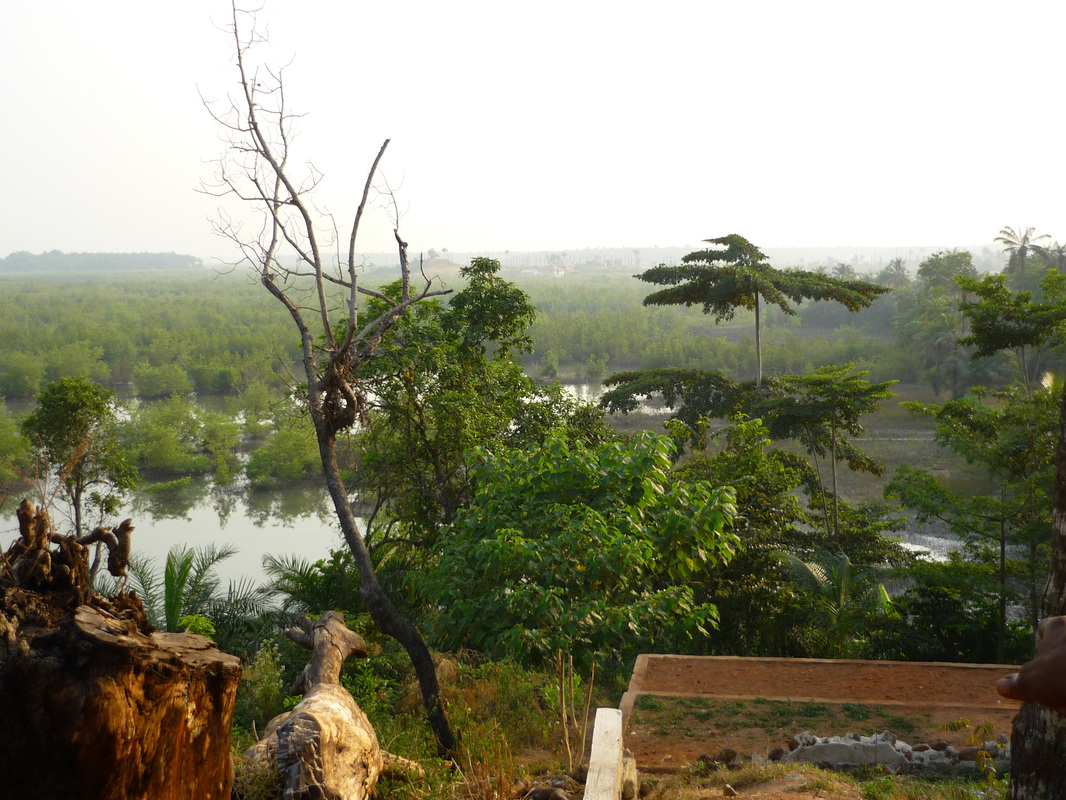
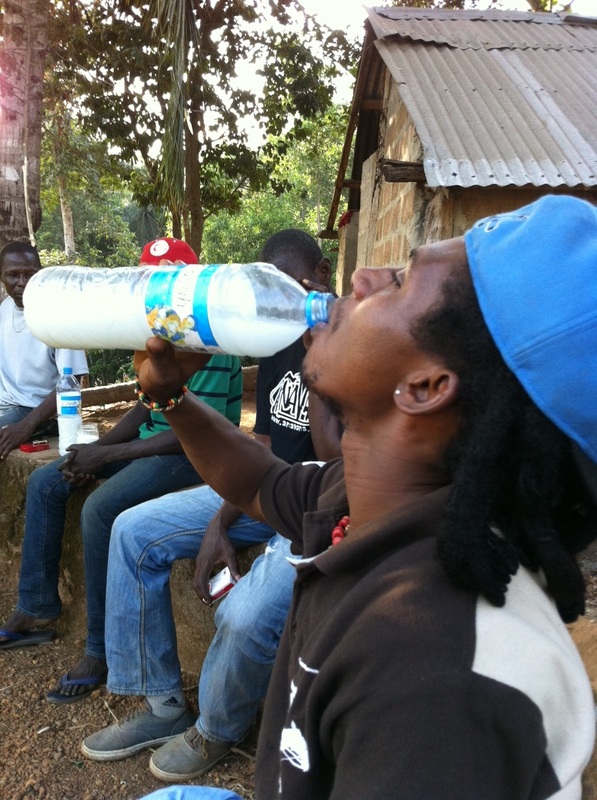
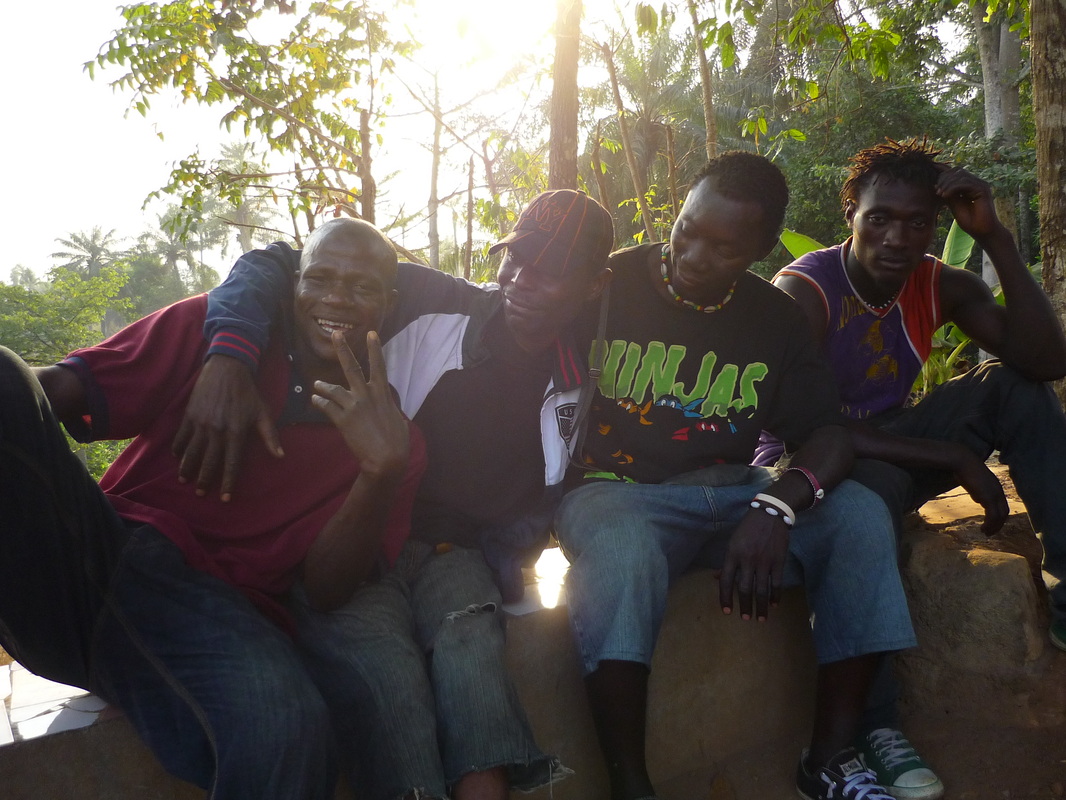
 RSS Feed
RSS Feed